Summary and Conclusion (continued)
Rune Circles
Many of the authors we have studied employed special runic circles for various purposes. Below, on the left, we have Gorsleben’s 1930 Rune Circle and, on the right, we have Kummer’s Rune Circle:
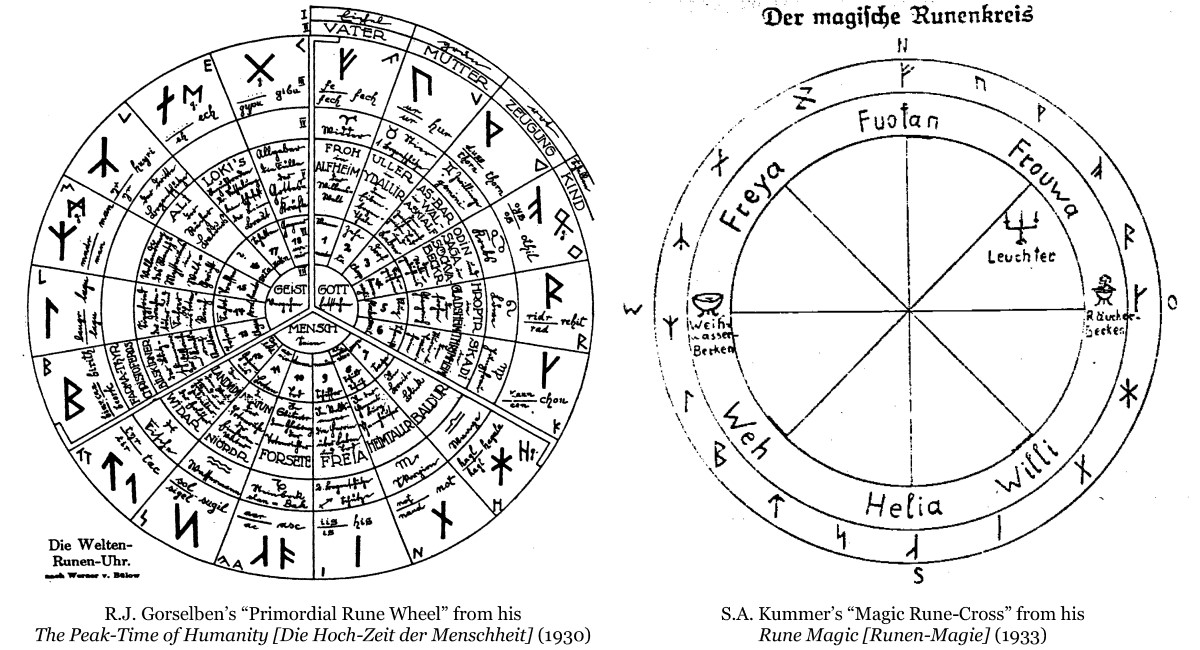
And here we have a Rune Circle from Huiracocha’s FRA group (with a translation of its correspondences on the right):
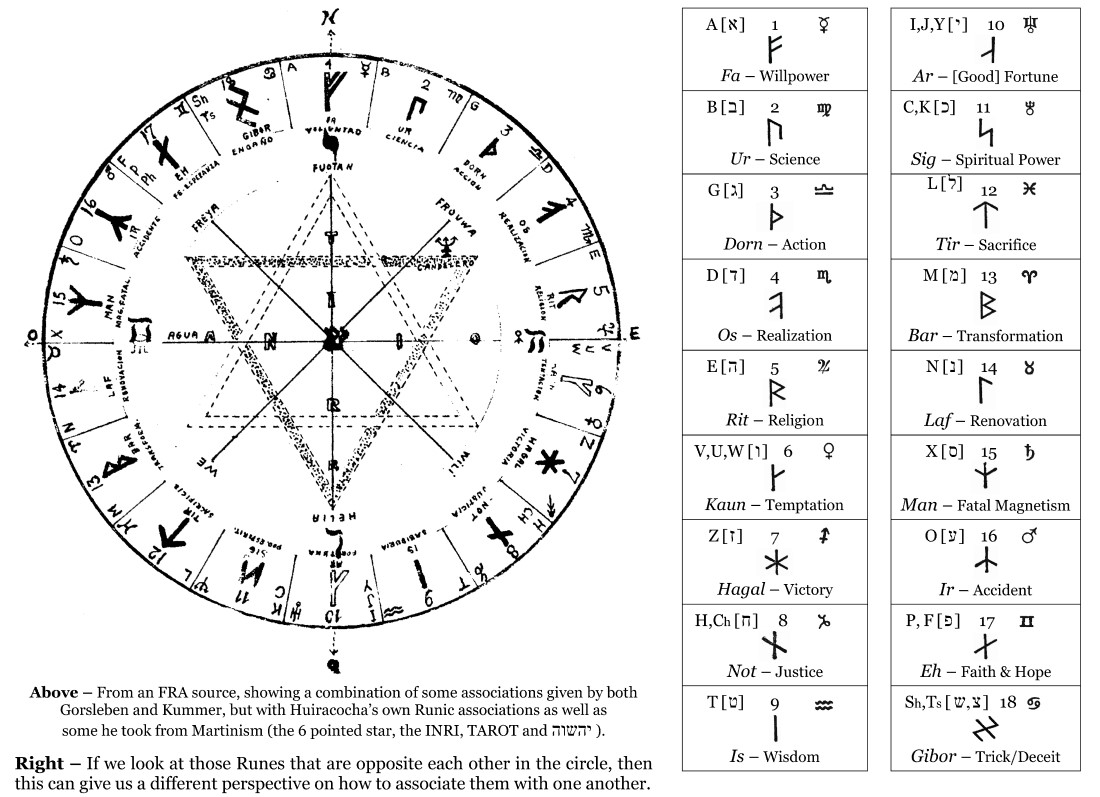
A comparison of these 3 Rune Circle clearly show, again, the influence that the German authors had on Huiracocha.
Grouping the Runes
Our Gnostic-Rosicrucian Rune Rows
Traditionally, the Runes are associated together in certain groupings, which are called a ‘Rune Row’. There may be additional attributes given to these groupings. With our Gnostic-Rosicrucian Runes, we have chosen to divide them into 4 rows, as follows:
1st Row: Fa or Freyr ’s Lineage [Fa oder Freyr’s Geschlecht]

2nd Row: Hagal or Odin ’s Lineage [Hagal oder Odin’s Geschlecht]

3rd Row: Tyr ’s Lineage [Tyr’s Geschlecht]

4th Row: Additional-Surplus Lineage [Überzählige Geschlecht] :
or “Gnostic-Enchantment” Lineage [Gnostische-Verzauberung Geschlecht] :

Rune Combinations by Meaning & Shape
We have already mentioned that certain Runes go together, such as 4 & 21 and 18 & 22. They have been considered by some to be different versions of the same Rune.
There are also some Runes that seem to complement each other and some which stand alone. Let’s take a look:
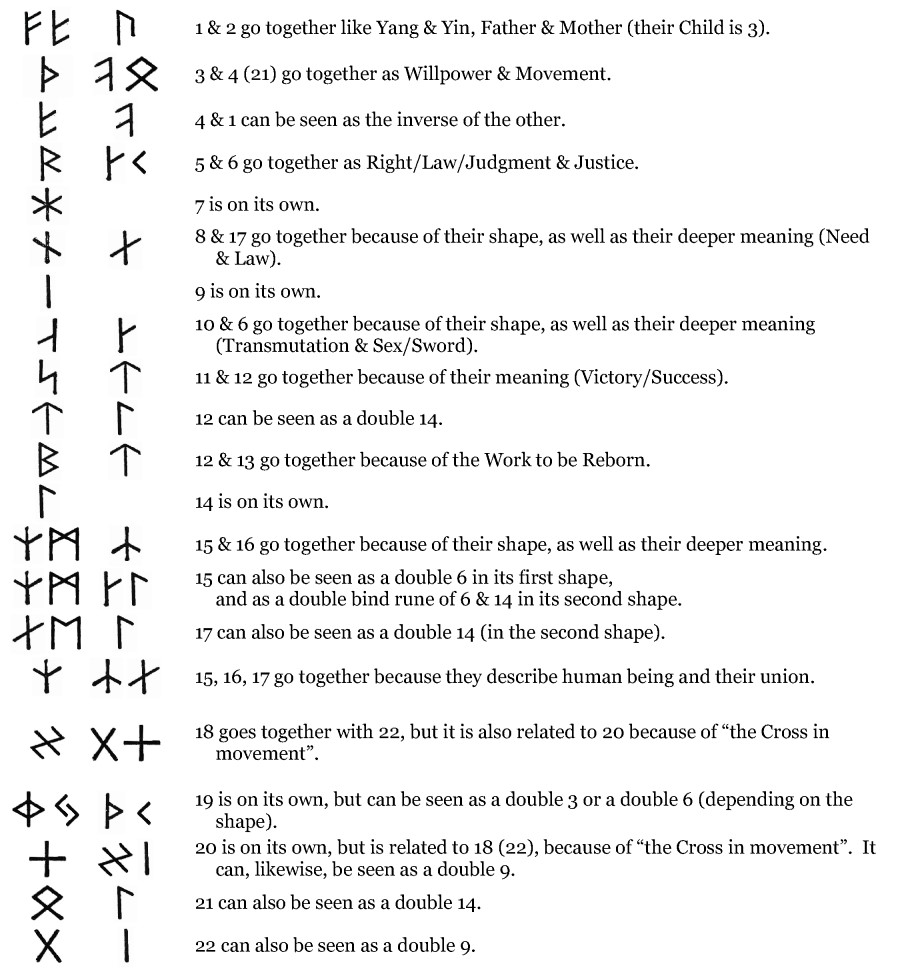
Rune Sound & Grammatical Groupings
Runes have been grouped into Vowels, Consonants, and Other (meaning neither a vowel nor a consonant):
Vowels:

Consonants:

Other:

Additionally, if we analyze the names of the Runes, then we learn:
• Among the Vowel names (Ur, Os/Othil, Is, Ar, Yr/Ir, and Eh ), we find that the consonant R is used most, followed by S.
• Among the Consonant names (Fa, Torn/Dorn, Rit/Rita, Ka/Kaum/Kaun, Not/Noth, Sig/Sal/Sol, Tyr/Tir, Bar, Laf, Man, Gibor/Gibur, Jer/Jera, and Gebo/Gefu ), we find that the vowel A is used most, followed by O and then I. The additional consonants most used (excluding the first letter of the Rune’s name) are R, then N, followed by T, B, F and L.
Since R shows up so much in the names of the Runes, this may indicate an important significance for this Rune.
Addendum
 by Sir Erasmus Wilson_sm.jpg) Runes in Africa?
Runes in Africa?
Many people are familiar with the Pyramids of Egypt, but how many know that there are similar very interesting structures through the world? South of Egypt, in Sudan, there are also pyramids and, in neighboring Ethiopia, we have the largest obelisk in the World.

In Yeha (northern Ethiopia) there inscriptions with very interesting characters are found. They are said to be from an ancient language or script, called by various names, such as: Himyaritic, Safa or Safaitic, Saba or Sabaic, Minaean, Minaean-Sabaean, as well as Musnad. The language ‘family’ is given as Proto-Arabic or South Semetic and the characters were written in what is called the ‘Ancient South Arabian script’. It is estimated by modern scholars to have been in use between the late 2nd millennium BCE to 6th century CE.
In his book Linguistic and Oriental Essays (1898), Robert Needham Cust says the following regarding this script:
“Professor Sayce works a new mine, and suggests, that the Phoenician Alphabet was not a Mother-Alphabet, created as a new invention, but was only the daughter of an older Alphabet, traces of which are found in Arabia: this is the great interest, which he has roused (Higher Criticism and the Monuments , p. 39): “The explorations of Dr. Glaser in South Arabia [Munich, 1889] have lately put the question in a new and unexpected light. He has recopied a large part of the Minaean Inscriptions on the rocks and ancient Monuments of Yemen and Hadhramaut, and has added more than one thousand fresh ones; they are in the Himyaritic Language, and in two different Dialects, the Minaean and Sabaean.” And he declares, that the Minaean Inscriptions are far older than the earliest known to us, that are written in Phoenician Characters (p. 42). Instead, therefore, of deriving the Minaean Alphabet from the Phoenician, it becomes necessary to derive the Phoenician Alphabet from the Minaean. The Phoenician Alphabet ceases to be the Mother-Alphabet, and becomes the daughter of an older one.”
Sayce is saying that the Minaean Alphabet is the Mother of the Phoenician. This is interesting because Phoenician is considered by many scholars to be the Parent of Old Hebrew, Aramaic and Greek (among other languages).
In Augustus Henry Keane’s book The Gold of Ophir, Whence Brought and by Whom (1901), he says that Minaean was the “earlier Sabaean” and that “the Sabaeo-Minaean script is purely alphabetical” as opposed to syllabic. In a note in the Appendix, we read the following:
“…I here quote what Sayce says on the antiquity of the Himyaritic script: “If Dr. Glaser is right, some of the Minaean inscriptions he has collected go back to the age of the Hyksos in Egypt; at any rate he and Prof. Hommel have made it clear that the kingdom of Saba or Sheba was preceded by that of Ma’in, and that consequently the Minaean or Himyaritic alphabet has an older history than the Phoenician. It would seem to follow that Prof. Hommel is right in holding that what Prof. D. H. Muller has called the Proto-Arabic alphabet is the source both of the Himyaritic and of the Phoenician, and that this fact will have to be taken into consideration in all future enquiries into the origin of the alphabet. It would certainly explain why it is that the Minaean alphabet possesses what the Phoenician alphabet does not—special characters, not derived from any others, for denoting certain sounds which belonged to primitive Semitic phonology but had been lost in the language of Canaan. It will also explain the names of many of the Phoenician letters which have hitherto been a mystery. It is only in the Minaean, not in the Phoenician alphabet, that the forms of the letters Aleph, Beth, Pe, and others resemble the objects after which they have been respectively named: ‘ox-(head)’, ‘house’, and ‘mouth’.” (‘Academy,’ Nov. 8, 1890)”
In another book called The Antiquity of Hebrew Writing and Literature (1911) by Alvin Sylvester Zerbe, we have a brief section called “Moses and the Minaean Alphabet”, where we read the following:
“Much can be said in support of [Fritz] Hommel’s view that the Hebrews before the Exodus acquired the alphabet in the Minaean or South Arabic form and that Moses employed it in his writings. Moses spent forty years in Midian and came under the influence of an advanced Semitic civilization, and nothing prevents our holding that he acquired a knowledge of the Minaean script then current in Midian.”
So let’s take a look at these alphabets and see their resemblance to the Runic Characters we are studying:
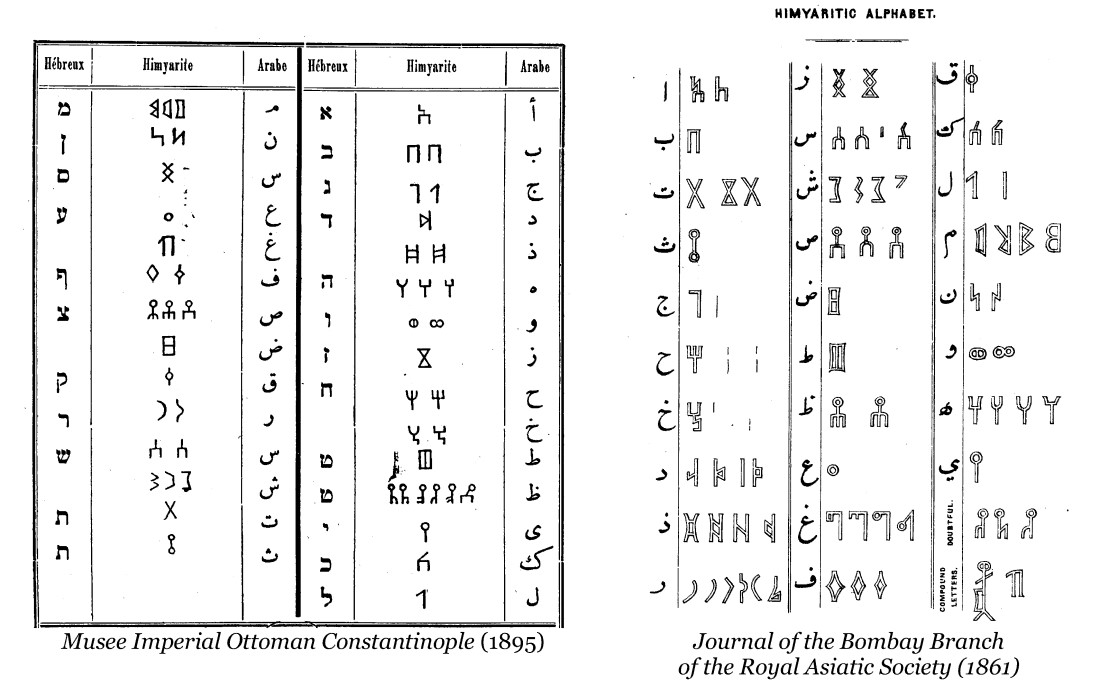
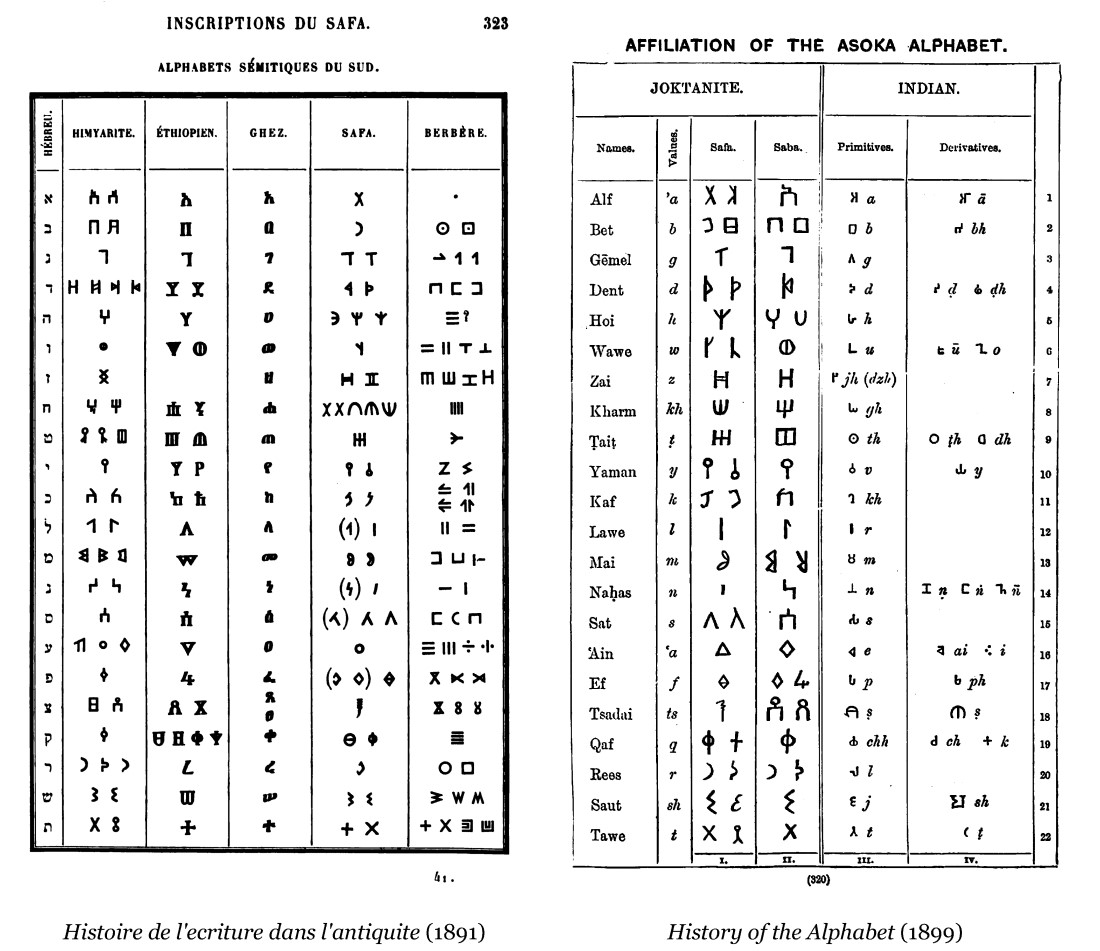
George Stephens, in his 1868 book The Old-Northern Runic Monuments of Scandinavia and England , says:
“I have somewhere in these pages, if I remember right, passingly alluded to the great similarity (not in power [or sound] but in form [or shape]) of the Himyaritic Alphabet of 28 letters to our Old Runes . This staverow, used in Southern Arabia in very early times, probably from some years or ages before Christ to about 6 centuries after that date, when it rapidly fell away before other characters, has lately excited great attention, and the British Museum has published a folio volume of the known monuments in this alphabet. They consist of votive bronze tablets in a long-lost idiom, whose nearest approach is traced in the present Amharic; allied to Ethiopic and Hebrew…
As we must be alive to every hint, as the resemblance in shape of these letters to the oldest runes in Scandinavia and England is very surprising, as this may be a connecting link to other alphabets now lost, and as we must eventually look to the East for further information…”
Combining all these different versions together, and comparing them to the Runes, we have:
 by O. Hamdy_sm.jpg)
And it does seem that many are similar in shape: 2, 6, 7, 12, 13, 19, and 22 are very similar (either in the primary or with one of the Rune Variants shown). Additionally: 3, 11, 14, 15, 16 and 21 are similar to different numbered Runes, as well (again, this may include one of the Rune Variants).
Download the Handouts for this class:
End of this Series